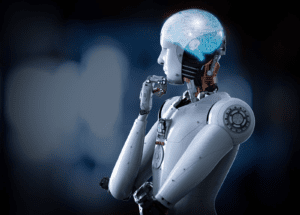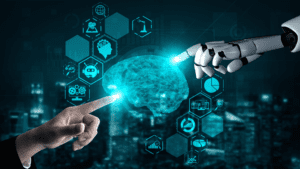AI TOOLS THREAT TO HUMANS

As an Artificial intelligence tool, I am designed to be helpful and provide information to people. However, like any tool, there is a potential for harm if I am used improperly or if my output is misinterpreted. Here are some potential risks associated with AI tools like mine:
- Biases: Artificial intelligence algorithms can be biased if they are trained on datasets that are not diverse or inclusive. This can lead to unfair outcomes for certain groups of people.
- Privacy: AI tools can collect and store large amounts of data about users, which could be used to identify or track individuals. This could be a concern if the data is not kept secure.
- Dependence: People may become overly reliant on Artificial intelligence tools like me, and may not develop critical thinking or problem-solving skills as a result.
- Misinformation: If the data or algorithms used to train an Artificial intelligence tool are inaccurate or biased, it could lead to the propagation of misinformation.
- Malicious use: Like any technology, Artificial intelligence tools can be used for malicious purposes, such as creating deep fakes or manipulating people’s behavior.
- Job displacement: As Artificial intelligence tools become more advanced, they may start to replace human workers in certain industries. This could lead to job loss and economic instability.
- Unintended consequences: Because Artificial intelligence tools are often designed to optimize for specific outcomes, they may not always take into account the full range of potential consequences. This could lead to unintended negative outcomes.
- Hacking and cybersecurity: AI tools can be vulnerable to hacking and other cybersecurity threats. If an AI tool is compromised, it could be used to carry out attacks or manipulate data.
- Ethical concerns: AI tools can raise a range of ethical concerns, such as the use of facial recognition technology for surveillance, or the use of Artificial intelligence algorithms in decision-making that affects people’s lives.
- Lack of accountability: Because Artificial intelligence tools can be complex and difficult to understand, it can be difficult to hold people accountable for the decisions that are made using them. This could lead to a lack of transparency and responsibility.
- Manipulation: Artificial intelligence tools can be used to manipulate people’s behavior, opinions, and decisions. For example, social media algorithms can be used to create filter bubbles that reinforce people’s existing beliefs and limit exposure to diverse perspectives.
- Autonomous weapons: Artificial intelligence tools can be used to develop autonomous weapons that can make decisions and take actions without human intervention. This raises a range of ethical concerns and risks.
- Unforeseen uses: Artificial intelligence tools can be used in ways that were not anticipated by their creators, leading to unintended consequences. For example, facial recognition technology designed for security purposes could be used to identify and track people in ways that violate their privacy.
- Lack of transparency: Because Artificial intelligence tools can be complex and difficult to understand, it can be difficult to determine how they arrived at a particular decision or recommendation. This lack of transparency can lead to a loss of trust in the technology.
- Overreliance: People may become overly reliant on Artificial intelligence tools and use them as a substitute for human judgment or decision-making. This could lead to a loss of critical thinking and problem-solving skills.


